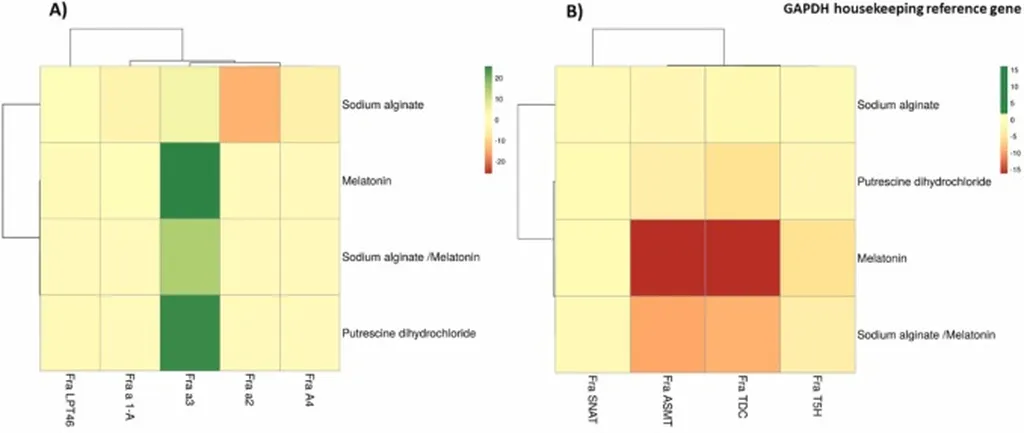In the ever-evolving world of agritech, researchers are continually seeking innovative methods to enhance crop quality and nutritional content. A recent study published in *Current Plant Biology* (which translates to *Current Plant Biology*) has shed light on a promising strategy that could revolutionize strawberry farming. The research, led by Egli C. Georgiadou from the Cyprus University of Technology, Department of Agricultural Sciences, Biotechnology & Food Science, explores the pre-harvest application of various priming agents to boost the quality and secondary metabolite profile of strawberry fruits.
The study focused on the strawberry cultivar ‘Felicity Q3’ and evaluated the impact of different priming agents—melatonin (Mel), sodium alginate (NaA), sodium alginate/melatonin conjugate (Mel-NaA), and putrescine dihydrochloride (Put)—applied at three developmental stages: large green (LG), small white (SW), and large white (LW). The findings revealed that the use of Mel-NaA and Put significantly improved fruit quality indicators such as firmness and color. Notably, Mel-NaA and putrescine-treated fruits exhibited increased total flavonoid content, a crucial factor for consumer health and satisfaction.
One of the most intriguing aspects of the study was the enhancement of ellagitannins and ellagic acid derivatives following Mel-NaA pre-treatment. “This suggests that Mel-NaA could be a game-changer in the way we approach strawberry cultivation,” Georgiadou remarked. The research also highlighted that priming treatments did not adversely affect the volatile organic compounds (VOCs) in the fruit, ensuring that the aroma quality remained intact.
From a commercial perspective, the implications are substantial. The ability to enhance the nutritional content and quality of strawberries without compromising their aroma could lead to higher market value and consumer preference. This ‘green’ approach not only promises sustainable improvements in the physicochemical attributes of strawberries but also opens avenues for further research into the use of sodium alginate as a smart delivery mechanism for other chemical priming agents.
As the agritech sector continues to innovate, studies like this one pave the way for more sustainable and efficient agricultural practices. The research not only advances our understanding of pre-harvest treatments but also sets the stage for future developments in enhancing crop quality and nutritional value. With the findings published in *Current Plant Biology*, the scientific community now has a robust foundation to build upon, potentially transforming the way we cultivate and consume our favorite fruits.

